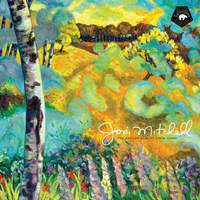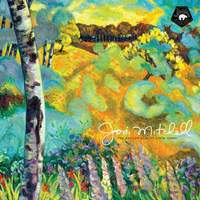Artist Anthologies,
The Black Saint and the Singer Lady, or When Joni Went Jazz

Joni Mitchell's creative output during the late seventies marked a significant evolution in her musical personality, as she moved away from her folk roots and embraced a more complex, jazz-influenced compositional style. During this period, the singer's work was re-characterised by its ambitious, experimental nature and its blending of jazz, folk and rock elements. Her collaboration with top-tier jazz musicians not only pushed the music's boundaries but also solidified her reputation as a versatile and innovative artist. Join us, as we provide a rundown of Joni's key works and main collaborators during this era, freshly released together for the first time on The Asylum Years (1976-1980).
“You have two options. You can stay the same and protect the formula that gave you your initial success. They’re going to crucify you for staying the same. If you change, they’re going to crucify you for changing. But staying the same is boring. And change is interesting. So, of the two options, I’d rather be crucified for changing.”
— Joni Mitchell in Rolling Stone, 26/7/79
While not strictly a jazz album, Hejira (1976) marked the beginning of the singer's move towards the genre. Often seen as a transitional record in Joni's career, it showcased her growth from the folk style towards more elaborate musical structures and narrative-driven songs. The album's title is an Arabic word meaning ‘journey’, reflecting the themes of voyaging and introspection that permeated Mitchell’s work at the time. The lyrics are deeply personal, capturing her experiences and thoughts during her travels across the United States. Its most prominent jazz influence was through the inclusion of bassist Jaco Pastorius, the virtuoso electric bassist known for his innovative approach to his instrument whose fretless tones became a defining element of Joni's sound during this period.

Next up, we have Don Juan's Reckless Daughter (1977). This double album is heavily jazz-oriented, featuring peculiar arrangements that tour a wide variety of different musical environs. It is considered one of her most ambitious, experimental and, ultimately, underestimated works. The album features extended song structures, rich instrumentation and an eclectic range of influences. It showcases Mitchell’s ability to combine storytelling with intricate musical compositions, once again featuring contributions from prominent jazz musicians, including six (count 'em) members of Weather Report – Pastorius and Wayne Shorter, plus the percussion dream team of Manolo Badrena, Airto Moreira, Don Alias and Alex Acuña, each of whom fully let rip on the extended-length Latin-flavoured instrumental, 'The Tenth World'.
Inevitably, Joni's succesful foray into the world of jazz would catch the attention of some its heavyweights. This led to Mingus (1979), a heartwarming collaboration with legendary jazz bassist and composer Charles Mingus, which consists of Mitchell's lyrics set to Mingus's compositions ('Goodbye Pork Pie Hat') as well as featuring a handful of pieces co-written by the pair ('The Dry Cleaner from Des Moines'). Released shortly after the formidable bandleader's death as he succumbed to Lou Gehrig's disease, the album is both a tribute and a fusion of their mutual artistic talents, representing an enjoyable melding of two significant creative forces.
Finally, Shadows and Light (1980) is a live double album capturing performances from Mitchell's tour in support of her previous records. Showcasing reinterpreted versions of her older songs alongside more recent jazz compositions, the performance highlights the improvisational skills and dazzling interplay of her phenomenal band members: Pat Metheny, Jaco Pastorius, Michael Brecker, Lyle Mays and Don Alias. In essence, the recording melds Mitchell's diverse musical influences into a rich jazz mastery, brought to life through the cohesive chemistry of her world-class band.
Between 1976 and 1980, the material Joni released left a profound impact on the musical landscape, signifying several key developments. By merging folk, rock and jazz, she demonstrated the possibilities of cross-genre experimentation. Her introspective and sophisticated lyrics set a new standard for songwriting, demonstrating that popular music could be both deeply personal and intellectually engaging. Through working with virtuoso musicians like Jaco Pastorius, Wayne Shorter and Charles Mingus, Joni also highlighted the importance of collaboration in pushing creative boundaries. As a female artist boldly navigating and succeeding in the male-dominated jazz world, she paved the way for other women to pursue and be recognised, whilst her own continual artistic evolution underscored the importance of growth and change in sustaining a long and influential career. Overall, Joni's work during this era underscored the limitless potential of musical fusion, setting a precedent for artistic bravery and innovation in popular music.
And, for something similar but altogether different, you can hear vocalist Imogen Ryall give her take on songs from this fascinating era...
Available Formats: CD, MP3, FLAC, Hi-Res FLAC





